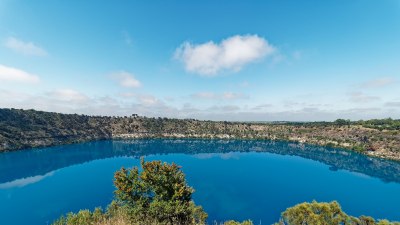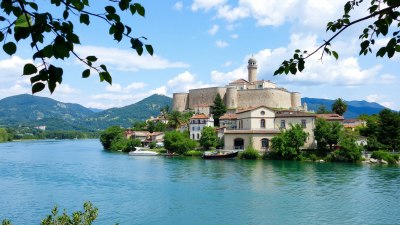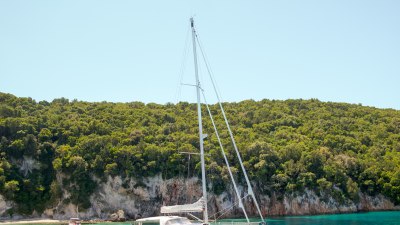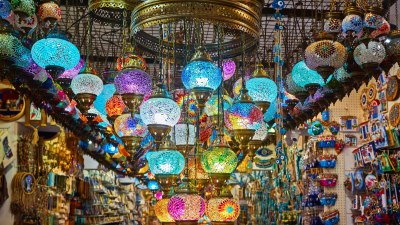When the River Remembers in Shkodër, Albania
Discover the beauty and heritage of Shkodër, Albania, through the lens of its rivers and cultural history.

Image created with Flux Schnell
Shkodër, a jewel nestled in the northern part of Albania, is often referred to as the cultural capital of the country. It boasts a rich history intertwined with the flowing waters of its rivers, particularly the Buna and the Drin. These rivers do not merely serve as geographical entities; they are the silent witnesses to the passage of time, embodying tales of resilience, culture, and remembrance. The title 'When the River Remembers' encapsulates the essence of the memory embedded in the waters of Shkodër.
The Historical Significance of Shkodër
Shkodër is one of the oldest cities in Albania, with roots stretching back to ancient Illyria. The city has played a crucial role throughout history, serving as a cultural and economic hub. The topography of Shkodër, cradled by the Albanian Alps and enriched by the proximity of the Buna and Drin rivers, has attracted various civilizations. The Romans built the city of Scodra here, leaving behind archaeological treasures that continue to be unearthed. The combination of water and land has fostered a thriving community over the centuries, where art, music, and literature have flourished.
The Rivers as Lifelines
The Buna River, a lifeline for the region, meanders gracefully through fertile plains. It is known not only for its scenic beauty but also for its ecological significance. The rich biodiversity supported by the river has made it a vital resource for local communities, providing fish and irrigation. Cultural activities such as fishing and traditional boat-building are integral to the identity of the Shkodër people. Moreover, the Buna River holds a special place in the hearts of the locals; it carries the collective memories of generations, from the struggles against invaders to the peaceful days of fishing and gathering along its banks.
Legends and Folklore
The rivers of Shkodër are steeped in legends and folklore that add a mystical dimension to their physical presence. Local myths often recount stories of love, loss, and the struggles of the past. For example, it is said that the spirit of the river remembers every soul that has traversed its waters, be it a fisherman hoping for a bountiful catch or a traveler seeking solace in its serene flow. These stories serve as a bridge connecting the past with the present; they are recounted around the hearths of homes, passing down the legacy of Shkodër’s vibrant culture.
Shkodër: A Cultural Melting Pot
The cultural tapestry of Shkodër is rich and diverse, woven together by the threads of its historical events and the cultural exchanges facilitated by its rivers. The city has seen a blend of different religions, languages, and traditions, with Islam and Christianity coexisting harmoniously. The architectural landscape reflects this blend, with mosques and churches standing side by side, each telling a story of coexistence and respect. Art plays a significant role in this dynamic, with musicians and artists drawing inspiration from the rivers, infusing their works with the soul of Shkodër’s landscapes. The local cuisine, featuring fish caught from the rivers, showcases a distinct culinary heritage that speaks to the union of land and water.
The Natural Beauty of Shkodër
Nature enthusiasts flock to Shkodër to immerse themselves in its breathtaking landscapes. The interplay of light on the water, the lush greenery surrounding the rivers, and the majestic snow-capped peaks of the Alps create a picturesque panorama. Birdwatchers can spot unique species that inhabit the wetlands, while adventurous souls can partake in activities such as kayaking along the Buna River. Observing the harmonious coexistence of nature and humanity in this region is a poignant reminder of the importance of preserving the environment. Shkodër’s natural beauty is a source of inspiration for artists and poets, reflecting the intertwined relationship between the landscape and the cultural narrative.
The Role of Mostar and the River Buna
The Buna River is also significant because of its historical connection to the town of Mostar, located just north of Shkodër. Known for its iconic bridge, Mostar showcases the architectural beauty that often draws parallels with Shkodër. The Buna also flows into the Neretva River, another historical waterway linking these regions. This relationship highlights the importance of rivers in fostering trade and connections between towns, enabling cultural exchange and economic growth. Such waters have facilitated the flow of goods, ideas, and traditions from one place to another for centuries.
Art and Literature Inspired by the Rivers
The rivers of Shkodër have inspired countless artists and poets throughout the years. The rhythmic flow of the water has been a muse for artists who seek to capture its beauty on canvas. Local galleries often feature works that highlight the significance of the rivers, showcasing the unique perspectives of contemporary artists. Literature also serves as a vessel for memories, as poets weave the essence of rivers into their verses, exploring themes of nostalgia and belonging. By integrating elements of nature into creative expressions, the artists and writers of Shkodër contribute to a broader narrative about the significance of these waterways.
Climate and Environmental Concerns
The climate in Shkodër is characterized by hot summers and mild winters, creating an ideal environment for both agriculture and tourism. However, with the rising impact of climate change, the region faces environmental challenges that threaten its ecological balance. Issues such as pollution and the alteration of river courses pose risks to the biodiversity that thrives along the banks. Local initiatives are increasingly focusing on sustainability and conservation, ensuring that the rivers continue to be valued resources for future generations. Engaging the community in environmental efforts is crucial to safeguarding the rich ecological heritage that the rivers support.
As we delve into the narratives of Shkodër, it becomes clear that the rivers are much more than just bodies of water; they are custodians of memory, bearers of history, and lifelines for the community. The stories they carry echo through time, reminding us of the resilience and spirit of the people who call this culturally rich city home. When the river remembers, it not only tells us tales of the past but also inspires hope for the future. Through preservation efforts, cultural expressions, and environmental stewardship, the legacy of Shkodër—and its rivers—will continue to flow on, nourished by the memories of those who have come before.











